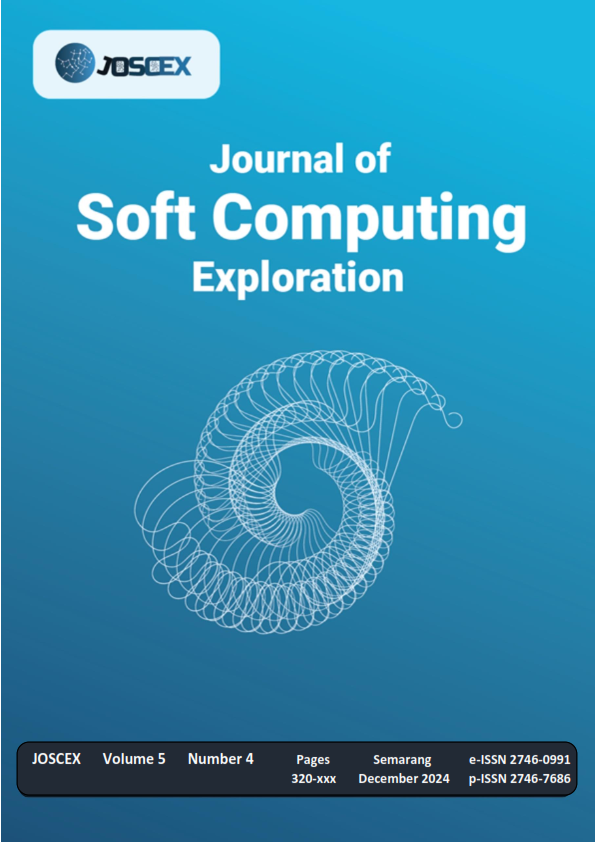Development of an IoT-based temperature and humidity prediction system for baby incubators using solar panels
Main Article Content
Abstract
Baby incubators are crucial medical devices to maintain environmental stability for babies born prematurely or have health problems. This research aims to develop a prediction system for temperature and humidity variables in baby incubators by utilizing Internet of Things (IoT) technology and solar panels as the main energy source. Despite advancements in IoT-based incubator systems, existing solutions often rely on reactive approaches, making them less effective in preventing harmful environmental fluctuations. Addressing this gap, this study focuses on optimizing temperature and humidity predictions using artificial intelligence (AI) for proactive control. Using a DHT22 sensor to measure temperature and humidity, as well as a 1 Wp solar panel, the system is designed to operate autonomously in areas with limited access to electricity. The methods used include data collection, data processing to calculate correlation coefficients, and selection of linear regression models for the analysis of relationships between variables. The results showed that the linear regression model applied had a good temperature and humidity prediction with a Mean Squared Error (MSE) value of 0.45 for the training data and 7.32 for the test data.
Downloads
Article Details

This work is licensed under a Creative Commons Attribution-ShareAlike 4.0 International License.
References
K. S. Reddy, S. Farooq, M. M. Minhaj, S. Irshad, and V. R. Babu, “Real Time Monitoring and Control of Substation Parameters using IOT,” no. June, 2021.
L. Anastasi and S. Lapono, “Sistem Pengontrolan Suhu dan Kelembaban Pada Inkubator Bayi,” 2016.
K. Anggara, F. Hadi, J. Haidi, C. Aplikasi, and G. Cam, “Pengembangan Sistem Monitoring Inkubator Bayi Prematur Secara Real Time Menggunakan Android,” vol. 10, no. 2, pp. 1–8, 2020.
R. Permatasari and U. Trisakti, “Pengujian Inkubator Bayi Menggunakan 2 Buah Lampu Pijar Berkapasitas 25 Watt pada 11 Suhu Ruangan yang Berbeda,” J. Penelit. dan Karya Ilm. Limbaga Penelit. Univ. Trisakti, vol. 5, 2020, doi: 10.25105/pdk.v5i2.7350.
G. Liang, D. Niu, and Y. Liang, “Sustainability Evaluation of Renewable Energy Incubators Using Interval Type-II Fuzzy AHP-TOPSIS with,” 2021.
A. Musyafa, I. Abadi, R. D. Noriyati, and R. Mukromin, “Design and Implementation Monitoring System Based Internet Of Tings ( IoT ) on Battery Charging - Photovoltaic Power Plant Using FLC,” no. October, 2020.
M. A. Rodríguez-l, R. Farr, G. Solana, and J. Otero, “HardwareX Low-cost and open-source neonatal incubator operated by an Arduino microcontroller,” vol. 15, no. July, 2023, doi: 10.1016/j.ohx.2023.e00457.
M. Rif, S. Hp, M. Shidiq, R. Yuwono, H. Suyono, and A. P. Cell, “Optimasi Pemanfaatan Energi Listrik Tenaga Matahari di Jurusan Teknik Elektro Universitas,” vol. 6, no. 1, pp. 44–48, 2012.
K. Tran et al., “Designing a Low-Cost Multifunctional Infant Incubator,” no. January 2019, 2014, doi: 10.1177/2211068214530391.
P. Tiam, M. Youssoufa, M. Foutse, J. Dongmeza, F. De Paul, and M. Kamga, “Technical note A multi-function neonatal incubator for low-income countries : Implementation and ab initio social impact,” Med. Eng. Phys., vol. 77, pp. 114–117, 2020, doi: 10.1016/j.medengphy.2019.10.021.
D. I. Indonesia, “Potensi dan peranan plts sebagai energi alternatif masa depan di indonesia,” no. August 2012, 2015, doi: 10.29122/jsti.v14i2.919.
I. K. Agus, A. Aryanto, D. Maneetham, and P. N. Crisnapati, “IoT-enhanced infant incubator monitoring system with 1D-CNN temperature prediction model,” vol. 34, no. 2, pp. 900–912, 2024, doi: 10.11591/ijeecs.v34.i2.pp900-912.
R. Indra and M. Khamim, “Prediksi daya panel surya kapasitas 50 wp menggunakan model regresi linear majemuk,” J. Teknol. Bahan dan Barang Tek., vol. 10, no. 2, pp. 58–65, 2020, doi: 10.37209/jtbbt.
M. Khamim, “Soft Sensor Design of Solar Irradiance Using Multiple Linear Regression,” no. January 2020, 2019, doi: 10.1109/ISITIA.2019.8937150.
R. Kusumah and H. I. Islam, “Sistem Monitoring Suhu dan Kelembaban Berbasis Internet of Things ( IoT ) Pada Ruang Data Center,” vol. 7, no. 1, pp. 82–88, 2023.
F. F. Wibowo, M. Rokhmat, and Aripriantoni, “Efek penempatan panel surya terhadap produksi energi pembangkit listrik tenaga surya cirata 1 mw,” vol. 6, no. 2, pp. 5026–5033, 2019.
H. Y. Chen and C. Chen, “Evaluation of Calibration Equations by Using Regression Analysis: An Example of Chemical Analysis,” Sensors, vol. 22, no. 2, 2022, doi: 10.3390/s22020447.
E. Sreehari, “Climate Changes Prediction Using Simple Linear Regression,” no. February 2019, 2020, doi: 10.1166/jctn.2019.7785.
U. Forssell, “Asymptotic Variance Expressions for Identi ed Black-box Models,” no. September 1985, 2014, doi: 10.1109/CDC.1984.272156.
H. J. Palanthandalam-madapusi, S. Lacy, J. B. Hoagg, and D. S. Bernstein, “Subspace-Based Identification for Linear and Nonlinear Systems,” Proc. 2005, Am. Control Conf. 2005., pp. 2320–2334 vol. 4, 2005, doi: 10.1109/ACC.2005.1470314.
H. A. I. Aike, “A New Look at the Statistical Model Identification,” 1974.

